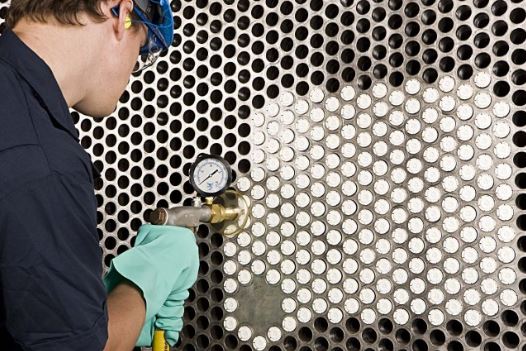
Heat exchanger cleaning is an important service sought in industries and household. Heat exchangers are extensively found in various industries such as power generation, steel industry, sugar, pulp, petrochemical industry etc. They are also found in major agricultural equipment where their large-scale use is of high importance for the farmers and the industry. Similarly, they are found in the household items such as A/C, refrigerator etc. Since they are actively involved in the heating and cooling process, they come in contact with cooling agents and air from outside. This leaves them susceptible to being contaminated. Various chemical deposits such as minerals and calcium can pile up between the coils of the heat exchanger. Similarly, dust particles can also start to pile up causing major problems.
Issues Caused by Contamination Heat Exchanger
There are a number of issues caused by the contamination and uncleanliness of heat exchanger hence emphasizing the need for regular heat exchanger cleaning and maintenance process. Some of the common problems caused are as follows:
- An unclean heat exchanger heats up more frequently leading to severe problems.
- The water control of the exchanger will be affected on there is clogging in the valves.
- Operating hours of the heat exchanger will be affected. It will take more time to
perform the heat exchanging process. This, in turn, affects the overall efficiency of the system. - The module will suffer wear and tear causing problems for the whole system.
- The overall life of the system may be affected due to the inefficiency of the heat
exchanger. - The system may take more energy to operate.
Heat Exchanger Cleaning Process
In order to perform the heat exchanger cleaning process, there is a need to first determine the exact nature of the problem. If there are chemical deposits in the heat exchanger then you may
need the services of a professional. In these cases, some cleaning agent will be required capable of dissolving the chemicals. A basis heat exchanger cleaning process is as follows:
- Drain the exchanger and isolate it to be cleaned.
- Place a ball valve between the return and supply vents of the heat exchanger so that other parts of the system can be protected.
- Now, the heat exchanger chamber is in front and it can determine whether chemical cleaning is required or not. In case there are chemical deposits then chemical cleaning will be required.
- Now, start vacuum cleaning the heat exchanger chamber and plates with the help of a high-grade cleaner. This will suck the dust, dirt and debris particles inside the chamber. Continue the process until the removable dust and debris have been removed.
- Now, add the cleaning agent into the chamber preferably with the help of pumps and hoses. The cleaning agent will circulate in the heat exchanger area and dissolve the deposited chemicals. The cleaning agent should be an appropriate solution, which can treat the deposited chemicals.
- Continue the circulation until the desired results have been achieved.
- Now, remove the cleaning services agent from the heat exchanger and clean it with water.
- Dry the equipment properly before using it in the system.
If you want to know how to clean granite?. Then visit here clean granite